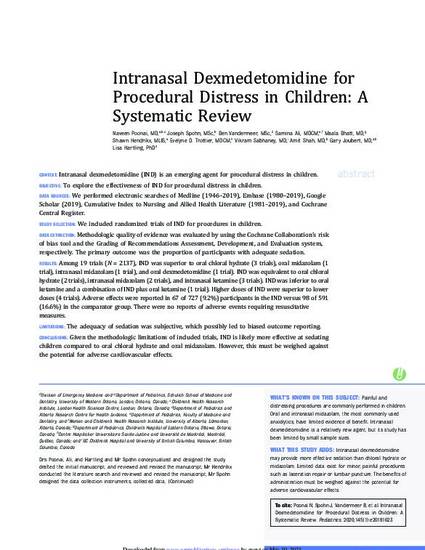
CONTEXT: Intranasal dexmedetomidine (IND) is an emerging agent for procedural distress in children.
OBJECTIVE: To explore the effectiveness of IND for procedural distress in children.
DATA SOURCES: We performed electronic searches of Medline (1946-2019), Embase (1980-2019), Google Scholar (2019), Cumulative Index to Nursing and Allied Health Literature (1981-2019), and Cochrane Central Register.
STUDY SELECTION: We included randomized trials of IND for procedures in children.
DATA EXTRACTION: Methodologic quality of evidence was evaluated by using the Cochrane Collaboration's risk of bias tool and the Grading of Recommendations Assessment, Development, and Evaluation system, respectively. The primary outcome was the proportion of participants with adequate sedation.
RESULTS: Among 19 trials (
LIMITATIONS: The adequacy of sedation was subjective, which possibly led to biased outcome reporting.
CONCLUSIONS: Given the methodologic limitations of included trials, IND is likely more effective at sedating children compared to oral chloral hydrate and oral midazolam. However, this must be weighed against the potential for adverse cardiovascular effects.
Available at: http://works.bepress.com/gary-joubert/7/
